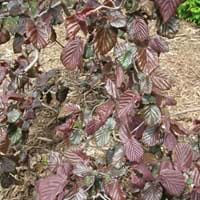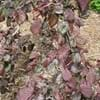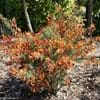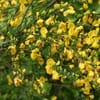Life Span
Annual
Perennial
Type
Shrub
Flowering Plants, Fruits, Herbs
Origin
Europe, Northern Africa, Western Asia
Australia, Tropical Indomalaya
Types
Shrub
Cavendish Bananas, Lady Finger Bananas, Pisang Raja, Williams Bananas, Cooking Bananas
Number of Varieties
Not Available
Habitat
Woods
Subtropical climates, Tropical rainforest, Tropical regions
USDA Hardiness Zone
4-8
8-15
Sunset Zone
2a, 2b, 3a, 3b, 4, 5, 6, 7, 8, 9, 14, 15, 16, 17, 18, 19, 20
H1, H2, 2a, 2b, 3a, 3b, 4, 5, 6, 7, 8, 9, 14, 15, 16, 17, 18, 19, 20, 21, 22, 23, 24
Habit
Thicket/Colonizing
Upright/Erect
Flower Color
Yellow
Burgandy, Ivory, Purple, White, Yellow
Flower Color Modifier
Not Available
Not Available
Fruit Color
Brown
Red, Yellow, Yellow Brown, Yellow green
Leaf Color in Spring
Green
Dark Green
Leaf Color in Summer
Green, Dark Green
Green
Leaf Color in Fall
Yellow, Green
Green
Leaf Color in Winter
Not Available
Green
Leaf Shape
Lobed
Cone shaped
Plant Season
Spring, Summer, Fall, Winter
Fall, Spring, Summer
Sunlight
Full Sun, Partial Sun, Partial shade
Full Sun, Partial shade
Type of Soil
Clay, Loam, Sand
Clay, Loamy
The pH of Soil
Acidic, Neutral, Alkaline
Neutral, Slightly Acidic
Soil Drainage
Well drained
Well drained
Bloom Time
Early Spring, Spring, Late Winter
Early Fall, Early Summer, Late Spring, Late Summer, Summer
Tolerances
Not Available
Not Available
Where to Plant?
Ground, Pot
Ground
How to Plant?
Grafting
From bulbs
Plant Maintenance
Medium
Medium
Watering Requirements
Average Water Needs, Do Not over Water
Allow soil to be completely dry in between waterings, It cannot sustain wet-feet, Requires regular watering, Water every two or three days during warmer months
In Summer
Lots of watering
Lots of watering
In Spring
Moderate
Moderate
In Winter
Average Water
Average Water
Soil pH
Acidic, Neutral, Alkaline
Neutral, Slightly Acidic
Soil Type
Clay, Loam, Sand
Clay, Loamy
Soil Drainage Capacity
Well drained
Well drained
Sun Exposure
Full Sun, Partial Sun, Partial shade
Full Sun, Partial shade
Pruning
Remove damaged leaves, Remove dead branches, Remove dead leaves
Prune after harvesting, Remove dead or diseased plant parts
Fertilizers
All-Purpose Liquid Fertilizer
All-Purpose Liquid Fertilizer
Pests and Diseases
Red blotch
Anthracnose, Banana aphid, Banana mosaic, Black sigatoka, Bunchy top, Cigar end rot, Coconut scale, Moko disease, Panama disease, Rhizome rot, Yellow sigatoka
Plant Tolerance
Drought
Drought
Flower Petal Number
Not Available
Single
Foliage Texture
Coarse
Bold
Foliage Sheen
Matte
Glossy
Attracts
Not Available
Not Available
Allergy
Not Available
Anaphylaxis, Mouth itching, Throat itching
Aesthetic Uses
Showy Purposes
Not Available
Beauty Benefits
Not Available
Not Available
Environmental Uses
Air purification
Air purification
Medicinal Uses
Minerals, Rich in protein, tonic in pregnancy, Vitamin E
Anemia, Antioxidants, Bronchitis, Diarrhea, Hangover, Heartburn, High blood pressure, Kidney problems, Menstrual Disorders
Part of Plant Used
Fruits, Leaves, Seeds, Wood
Flowers, Fruits
Other Uses
Culinary use, Used for its medicinal properties
Pulp can be used to make rope place mats and other goods, Used As Food, Used in paper industry
Used As Indoor Plant
No
No
Used As Outdoor Plant
Yes
Yes
Garden Design
Feature Plant, Foundation, Mixed Border, Topiary, Bonsai, Espalier
Showy Tree
Botanical Name
CORYLUS avellana 'Contorta'
Banana Tree
Common Name
common hazel
Banana Tree
In Hindi
contorted filbert
केले के पेड़
In German
contorted filbert
Bananenbaum
In French
noisetier contorsionné
Bananier
In Spanish
avellana contorsionada
Banano
In Greek
παραμορφωμένες φουντουκιού
μπανανιά
In Portuguese
filbert contorcido
árvore de banana
In Polish
wykrzywioną leszczyna
Banana drzewa
In Latin
contortis Avellanam
Musa sapientum fixa ligno
Phylum
Magnoliophyta
Magnoliophyta
Class
Magnoliopsida
Liliopsida
Order
Fagales
Zingiberales
Family
Betulaceae
Not Available
Clade
Angiosperms, Eudicots, Rosids
Monocotyledonous
Tribe
Not Available
Not Available
Subfamily
Not Available
Not Available
Number of Species
Not Available
Season and Care of Contorted Filbert and Banana Tree
Season and care of Contorted Filbert and Banana Tree is important to know. While considering everything about Contorted Filbert and Banana Tree Care, growing season is an essential factor. Contorted Filbert season is Spring, Summer, Fall and Winter and Banana Tree season is Spring, Summer, Fall and Winter. The type of soil for Contorted Filbert is Clay, Loam, Sand and for Banana Tree is Clay, Loamy while the PH of soil for Contorted Filbert is Acidic, Neutral, Alkaline and for Banana Tree is Neutral, Slightly Acidic.
Contorted Filbert and Banana Tree Physical Information
Contorted Filbert and Banana Tree physical information is very important for comparison. Contorted Filbert height is 180.00 cm and width 180.00 cm whereas Banana Tree height is 16.08 cm and width 7.87 cm. The color specification of Contorted Filbert and Banana Tree are as follows:
Contorted Filbert flower color: Yellow
Contorted Filbert leaf color: Green
Banana Tree flower color: Burgandy, Ivory, Purple, White and Yellow
- Banana Tree leaf color: Dark Green
Care of Contorted Filbert and Banana Tree
Care of Contorted Filbert and Banana Tree include pruning, fertilizers, watering etc. Contorted Filbert pruning is done Remove damaged leaves, Remove dead branches and Remove dead leaves and Banana Tree pruning is done Prune after harvesting and Remove dead or diseased plant parts. In summer Contorted Filbert needs Lots of watering and in winter, it needs Average Water. Whereas, in summer Banana Tree needs Lots of watering and in winter, it needs Average Water.





